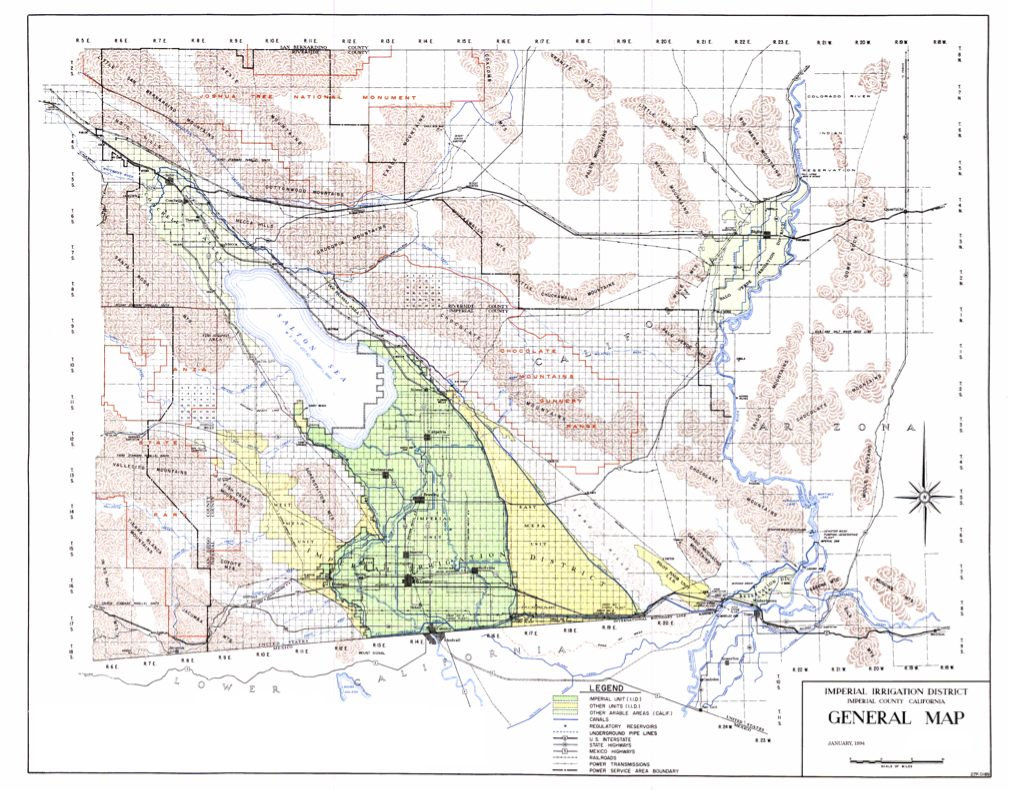Imperial County in the desert of southeastern California is the nation’s leading producer of Brussels sprouts.
According to the newly released U.S. Department of Agriculture Census of Agriculture, there were 2,237 acres of Brussels sprouts in Imperial in 2012, growing on 6 farms. For reasons unknown to me (c’mon, you’ve tried ’em, right?) Brussels sprouts are growing in popularity, with total U.S. acreage up from 3,874 in 2007 to 7,586 in 2012, most of them shipped direct to market. In 2007, Brussels sprouts acreage in Imperial on just two farms was so small that it wasn’t disclosed. Lissa points out that Trader Joe’s sells Brussels sprouts on the stalk as a decorative item. Maybe that explains the Brussels sprouts boom?
I say this not because of a particular fascination with Brussels sprouts (c’mon, you’ve tried ’em, right?), but rather because if I want to understand water in the Colorado River Basin, I have to understand farm water use in the Colorado River Basin. If I want to understand farm water use in the Colorado River Basin, I have to understand the Imperial Valley. In 2012, Imperial’s consumptive use of Colorado River water was 2.9 million acre feet (source – pdf). By comparison, agriculture’s consumptive use in the entire Upper Colorado River Basin in 2012 was 2.9 million acre feet (source – pdf).
Some other interesting Imperial County data points from the Census of Agriculture:
- Total land in farms – 515,783 acres
- Total irrigated land – 455,033 (interestingly, that’s up from 376,535 in 2007, a 21 percent increase – what’s up with that?)
- Total market value of agricultural production: $1.9 billion, up from $1.3 billion in 2007
- Net cash farm income, after expenses: $262 million, up from $195 million in 2007, a 34 percent increase
- Total vegetable acreage (including Brussels sprouts): 126,183 acres, up from 83,486 in 2007
- Total forage acreage (alfalfa and related munchies for cows and such): 246,400, up from 229,569 in 2007, a 7 percent increase.
You can see that Brussels sprouts was a bit of misdirection here. The real lead, if I were to write a news story about this data, is that in the midst of a deep drought gripping the Colorado River Basin, the farming region that uses the biggest chunk of the river’s water has expanded its production.
Maybe that’s the lead. But here’s another data point, from the U.S. Census Bureau’s 2012 American Community Survey: in 2012, per capita income in Imperial County was $14,833, just a hair above half the California statewide number of $28,341 and the poorest county in the state by a significant margin. And while farm income and irrigated acreage and Brussels sprouts are up, Imperial County per capita income is down from $14,996 in 2007. This isn’t a simple story.


How much water does an acre of alfalfa use vs. Brussels sprouts or other crops in the valley? How much acreage could move from forage to veg? I assume veg is worth more per acre, is that true?
(1) IID farmers have secure rights and cheap water ($21/af, last I checked).
(2) Farmers who want to SELL water to cities are blocked by IID’s messed up governance (http://www.aguanomics.com/2010/07/yes-split-iid-in-two.html)
(3) I’m not sure why acreage has expanded, but I’d check to see where 2007 was vs. earlier years. It may have to do with fallowing or use it/lose it.
(4) Brussels sprouts (wow — never knew the spelling) are pretty tasty — and trendy (same as kale 🙂
Pingback: Blog round-up: Water as seen through dolls and wine barrel fountains, lifeblood, groundwater, almonds and more … » MAVEN'S NOTEBOOK | MAVEN'S NOTEBOOK
As Walmart expands its organic offerings, it has become clear that with carrots for example, the big boys have muscled aside the Mom’n Pop organic growers. Perhaps something similar is going on in the Brussels sprout “space”, as we say in Silicon Valley. In the Devonian when I was in college, the coastal terraces in Santa Cruz County (CA) were carpeted with fields of Brussels sprouts, Yummy with pancetta they are.
Michael Pollan writes of this in his “The Omnivore’s Dilemma” and identifies Cal-Organic and Earthbound as cases in point.
Aside: IID farmers have zero water rights. IID itself, the government agency, holds the water rights. Here is the 1931 agreement apportioning water rights. The determination that rights are held by the agency, not the farmers, has been confirmed and reconfirmed in litigation, legislation and SWRCB permits. IID farmers have no more right to sell IID water than the residents of Manhattan do to sell off portions of Central Park.
(and then there’s the tiny little problem of getting the water to San Diego. The only existing conveyance facility is owned by MWD.)
Main point: The users of Colorado River water have all sorts of agreements and policies in place on shortages. ‘Drought’ has both scientific and legal meaning. The better question is whether IID is taking water in excess of the agreed-upon allocation in this circumstance. If it is, then it should stop. If it’s not, then the question is both substantive and procedural. Substantively, should it be taking less water? Procedurally, who decides? (And why should my, your or David’s judgment be substituted for that of the people who actually negotiated the terms of the shortage policy?)